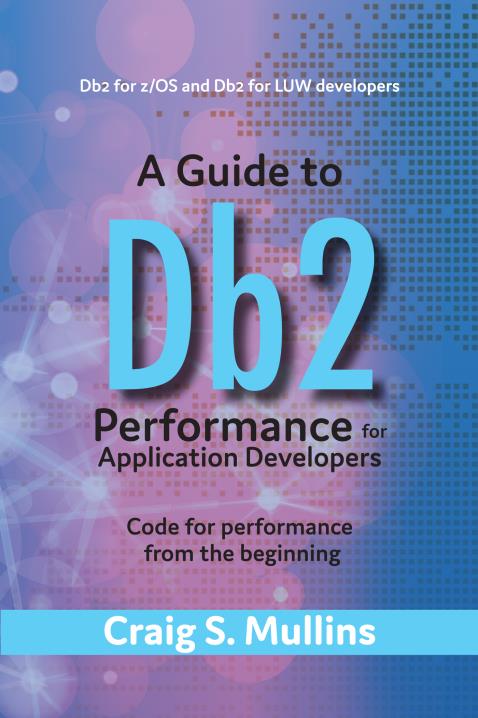Early in March 2019, IBM announced the latest and greatest
new function level, 504 (FL504), for Db2 12 for z/OS. For those of you not
paying attention, starting with Version 12, IBM has moved to a continuous
delivery model and has been releasing new functionality regularly. This means
that new capabilities are rolled out periodically in what IBM calls function
levels.
The first few new function levels were released slowly since
the GA of Version 12, but IBM has indicated that it will begin releasing
function levels much more quickly now that it has tested and perfected its
continuous delivery methodology.
So, what’s new in FL504? Well, several things. Let’s start
with better
control over deprecated objects. Those of us who work with Db2 know
that, over time, IBM deprecates functionality. When functionality is deprecated
it means that it is on the list of things that will be removed from Db2 in the
future. That is, deprecated features are still supported, but IBM does not
recommend that you continue to use the features. Basically, deprecation gives
users time to migrate their usage to another feature or capability until such
time as support is entirely removed.
OK, so IBM has been deprecating features for a long time
now, what is new in FL504? We now get the ability to prevent the creation of
new deprecated objects, which is a good idea, right? If the feature has been
deprecated by IBM you really shouldn’t be building new systems with that
deprecated capability; the idea behind deprecation is to allow existing
functionality to work until you can remove or replace it with support
functionality. Click
here for a full list of deprecated function in Db2 12.
Once
you have enabled function level 504 you can prevent the creation of certain
deprecated objects in your Db2 subsystems. Starting in function level 504,
SQL statement in packages that are bound with APPLCOMPAT(V12R1M504) or higher,
or with comparable SQL options in effect, are prevented from creating the following
types of deprecated objects:
- Synonyms
- Segmented (non-UTS) or partitioned (non-UTS) tables spaces
- Hash-organized tables
Hash-organized
tables are an interesting new deprecation. They were introduced quite
recently in Version 10. Evidently, they were not used by enough Db2 sites to justify
their continued support.
Another new capability of function level 504 is support
for Huffman compression
of Db2 data. This uses the IBM
Z hardware-based entropy encoding
(Huffman) compression with the IBM z14 Compression Coprocessor
(CMPSC). A new ZPARM, TS_COMPRESSION_TYPE, has been introduced (once you have
implemented FL504) that controls the compression method for the entire Db2 subsystem.
The TS_COMPRESSION_TYPE
subsystem parameter specifies the type of compression algorithm to use when Db2 creates new
compressed table spaces, loads into, and reorganizes existing
compressed table spaces. Of course, the Db2 subsystem must be running on z14 hardware
with Huffman compression enabled for this parameter to be used. Additionally, Huffman compression only applies to
universal table spaces. All other table space types will use fixed-length
compression regardless of TS_COMPRESSION_TYPE.
The third new capability of FL504 is support for the built-in
functions provided by the IBM Db2 Analytics Accelerator (IDAA). The support is pass-through only,
meaning that you must have IDAA in order for these BIFs to work. Db2 will
recognize that they are supported by IDAA and pass the work to the accelerator.
Db2 for z/OS only verifies that the data types of the parameters are valid
for the functions. The accelerator engine does all other function resolution
processing and validation. Click here for more information on how Db2 determines whether to accelerate eligible queries or not.
The IDAA BIFs that are supported in this way as of Db2 12 for
z/OS FL504 are CUME_DIST, CUME_DIST (aggregate), FIRST_VALUE, LAG. LAST_VALUE. LEAD, NTH_VALUE. NTILE, PERCENT_RANK, PERCENT_RANK (aggregate), RATIO_TO_REPORT, REGEXP_COUNT, REGEXP_INSTR, REGEXP_LIKE, REGEXP_REPLACE and REGEXP_SUBSTR.
Finally, FL504 provides new SQL syntax alternatives to make
it easier to port applications to Db2 from other platforms. This capability
gives developers more options for specifying certain special registers and NULL
predicates.
Table 1 below outlines the new syntax variations that are
supported for several existing special registers:
Table 1. New Special Register Syntax Alternatives
|
Existing Special
Register
|
New Syntax
Alternative
|
|
CURRENT
CLIENT_ACCTNG
|
CLIENT ACCTNG
|
|
CURRENT
CLIENT_APPLNAME
|
CLIENT APPLNAME
|
|
CURRENT
CLIENT_USERID
|
CLIENT USERID
|
|
CURRENT
CLIENT_WRKSTNNAME
|
CLIENT WRKSTNNAME
|
|
CURRENT SERVER
|
CURRENT_SERVER
|
|
CURRENT TIME ZONE or
CURRENT TIMEZONE
|
CURRENT_TIMEZONE
|
Additionally, ISNULL
and NOTNULL are also now supported as alternatives for the IS NULL and IS NOT
NULL predicates. For additional details, see NULL predicates.
Summary
Take some time to investigate this new functionality
to determine whether it makes sense to introduce it to your Db2 environment. If
so, be suire to read through the incompatible changes (such as if your Db2 has
a UDF that matches one of the new IDAA BIFs, or a variable that uses one of the
new syntax alternatives). And only then
build your plan for activating the new function level.
Also, be aware that if you are not currently
running at FL503, moving to FL504 activates all earlier function levels. You
can find a list of all the current function levels here.











